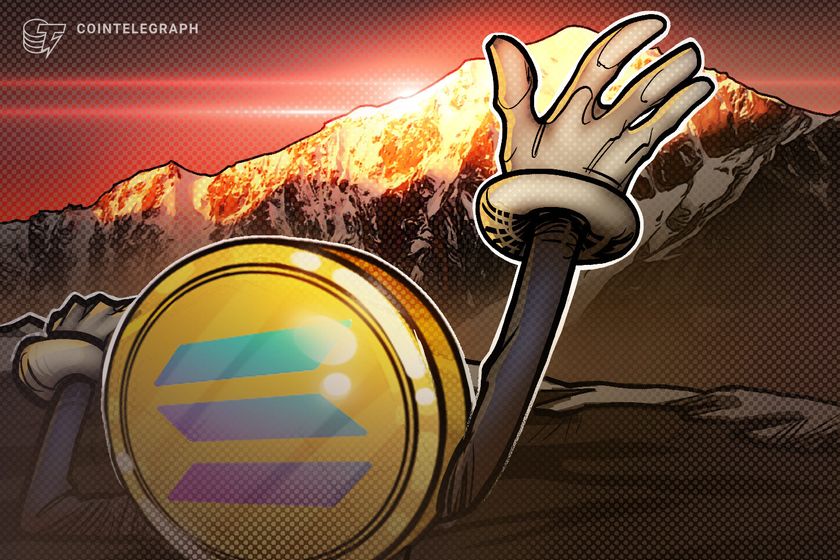
A Flamethrower to the Fed
HodlX Guest Post Submit Your Post
One hundred eleven Bitcoin Ordinal inscriptions each representing the burning of $1 and $100 US bills have caught the attention of enthusiasts and the Web 3.0 media.
All are trying to understand the symbolism behind turning into ashes the equivalent of $10,101 while risking jail and fines, given that it may be illegal to light up cash in the United States under Federal Law.
Anciently, burning money had spiritual symbolism. For thousands of years, people in China burnt money for the spirits of deceased family members, ancestors and myriads of demons and divinities.
In Buddhist belief, burning money enables ancestors to purchase luxuries and other things they need for a comfortable afterlife.
The act of publicly burning bills or other forms of fiat currencies currently has two main objectives artistic expression and protest.
Often, burning money is a way to point out how worthless fiat currencies are.
History of burnt currency
The act of burning currency is well-versed across history and the world.
In the early 18th century, New York City courts publicly burned counterfeit bills they seized to show people how dangerous and worthless fake money is.
Of course, back then, the US monetary system was backed by the value of physical gold.
That is no longer the case, so many argue that US notes are about as worthless as counterfeit bills.
In 1984, the popular French celebrity Serge Gainsbourg burned a 500 Francs banknote on television to protest the elevated taxes.
Arguably, the most dramatic money burning occurred in August 1994 when Bill Drummond and Jimmy Cauty of the electronic dance music band KLF set £1 million in cash on fire on a Scottish island designed to challenge anti-capitalism, corporate power and copyright laws.
In 2010, Swedish Feminist Initiative spokeswoman Gudrun Seeman burned 100,000 Swedish kronor during a speech about the gender pay gap.
Eight years later, the artist collective Distributed Galleries created two machines called Chaos Machines that burn banknotes and convert them into cryptocurrency while playing music.
As recently as August 2023, Argentinian football soccer fans burned and tore bank bills, mocking the country’s spiraling inflation.
Local authorities responded to these actions, saying those caught destroying the local currency could face up to 30 days in jail.
Burning dollars in the US
Although the 111 US bills burned for the enigmatic collection, as referred to by a recent news report, were burned for artistic reasons, they also seemed to have been put up in flames to protest against monetary systems worldwide.
According to several reports, the US dollar has lost nearly 97% of its purchasing power since 1913 because of monetary policies.
It demonstrates that a $100 bill printed in 1913 would only be worth $3.87 in 2019.
Satoshi’s anti-banking sentiment
These latest Ordinals creators seem to share the vision of Satoshi Nakamoto, the founder of Bitcoin, who, in Bitcoin’s block one on January 3, 2009, hid the following mysterious message The Times 03/Jan/2009 Chancellor on brink of second bailout for banks.’
Since then, Bitcoin enthusiasts have shared Satoshi’s anti-banking system sentiment and the notion that fiat is worthless while affirming that BTC has all it takes to replace the US dollar as the global reserve currency.
This new Ordinals collection has created an apparent ambiance riddled with mystery, as Satoshi Nakamoto created before vanishing from the face of our planet, leaving no trace.
One hundred eleven anonymous child inscriptions sit on Ord.io, and it makes sense that they have no identifiable person behind them as they are full of symbolism and even protest.
The burnt bills are worth a total of $10,101.
Each of them represents the actual burning of Federal Reserve (US central bank) notes, which is prohibited under 18 U.S.C. § 333 utilation of national bank obligations is punishable by up to 10 years in prison and significant fines.
However, these laws were largely put in place to stem currency manipulation through counterfeiting and the US Government is more concerned about people printing their own money rather than setting it on fire for artistic or performance purposes.
A case in point comes from an incident at a nightclub in Atlanta, Georgia, in 2011. Then world boxing champion Floyd Mayweather was filmed publicly burning a $100 bill among revelers.
A national debate raged afterward about the legality of destroying or defacing legal tender yet Mayweather was never spoken to by the police, let alone charged with a crime.
Professor Felicity Gerry, an International King’s Counsel with expertise in financial crime, said,
“It may not be in the public interest to prosecute a performative act of art, and as a form of protest it may be protected by relevant free speech laws. In the US, free speech has Constitutional protection.
Gerry is also a member of the ‘art not evidence’ campaign to protect rap music from being used as evidence of gang affiliation in court.
Sending a clear anti-fiat message
According to sources close to the anonymous creators, who also demanded anonymity for obvious reasons, these Ordinals’ creators are keen on sending a clear anti-inflationary and anti-banking message to the Fed and other central banks.
“Central bank notes or bills are not worth the paper they’re printed on, which is why they might have assigned a greater value to the $1 bill than the $100.
“I’ll explain. According to a Federal Reserve report, a one-dollar bill costs 2.8 cents to print, while a $100 note costs 8.6 cents. That means having one hundred one-dollar bills would be more valuable than having just one $100 note.”
Although Ordinals went from hype to silence for a short period, including a 97% drop in trading volume, their popularity is again picking up, showing promise for Bitcoin, its network, OGs, purists and even regular users.
Mike Ermolaev is the founder of Outset PR, an agency that specializes in cryptocurrency public relations. The crypto industry has been his focus since 2017. Mike has also penned articles for renowned publications such as Investing, BitcoinMagazine, FXStreet, Benzinga and Invezz. He is also a frequent guest commentator on CoinTelegraph Brazil.
Follow Us on Twitter Facebook Telegram

Disclaimer: Opinions expressed at The Daily Hodl are not investment advice. Investors should do their due diligence before making any high-risk investments in Bitcoin, cryptocurrency or digital assets. Please be advised that your transfers and trades are at your own risk, and any loses you may incur are your responsibility. The Daily Hodl does not recommend the buying or selling of any cryptocurrencies or digital assets, nor is The Daily Hodl an investment advisor. Please note that The Daily Hodl participates in affiliate marketing.
Generated Image: Midjourney
The post A Flamethrower to the Fed appeared first on The Daily Hodl.
Go to Source
Author: Mike Ermolaev









